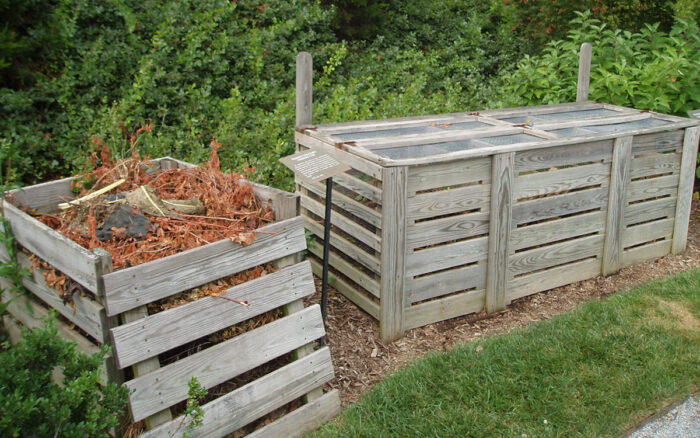
The value of having compost available for use in the home garden is immeasurable, and the convenience of creating that compost on-site for instant availability adds to the reward. Of course, learning how to successfully compost and creating a process that works for your home and lifestyle can certainly be a challenge. For those with plenty of available material for the composting process, along with enough space, the popular three-bin system allows for maximum efficiency in creating nutrient-rich compost. Constructing or purchasing a three-bin system establishes a time-tested design and organized approach that accelerates composting quickly and consistently, while allowing for three various stages of decomposition in close proximity.
Why the three-bin system is so successful
I’ve used this system at home for many years. The original setup uses 10 repurposed, heat-treated pallets for a rustic approach, with plenty of ventilation. I’m able to keep three bin spaces, which are roughly three feet tall, wide, and deep, open for different stages of compost. Having the oldest, aged compost available in one bin, an aging/curing pile in another bin, and an “active” pile for new ingredients allows me to keep the process orderly. The pallets, lined with some wire mesh, also create good air circulation and separation of the piles on all sides.
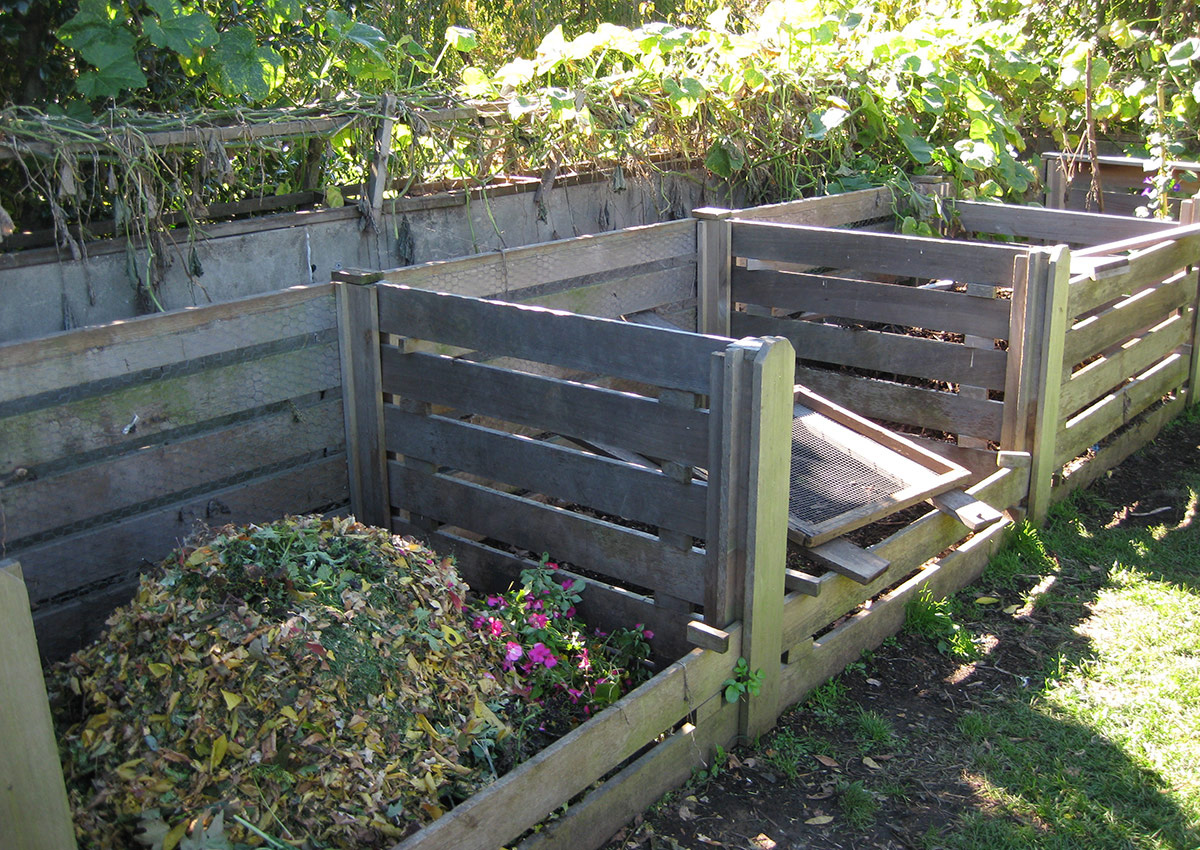
Managing three different stages of compost in the three-bin, linked system does require vigilance. Expect to balance ingredients (two to three parts brown to one part green), manage moisture, and, most importantly, actively turn and move materials between bins as desired. But this high-capacity system can also provide a more organized footprint in the garden and still offer the amazing convenience of having valuable, high-quality compost consistently available.
The different three-bin options
There are countless articles and videos online describing different DIY options and minimal-assembly kits, which each have their own pros and cons. Cedar is a common lumber for consideration because of its durability and relative rot resistance, but it’s prudent to avoid any chemically treated or painted materials. Bin systems can be made of various plastics, wood, wire mesh, powder-coated steel, and all manner of scavenged materials.
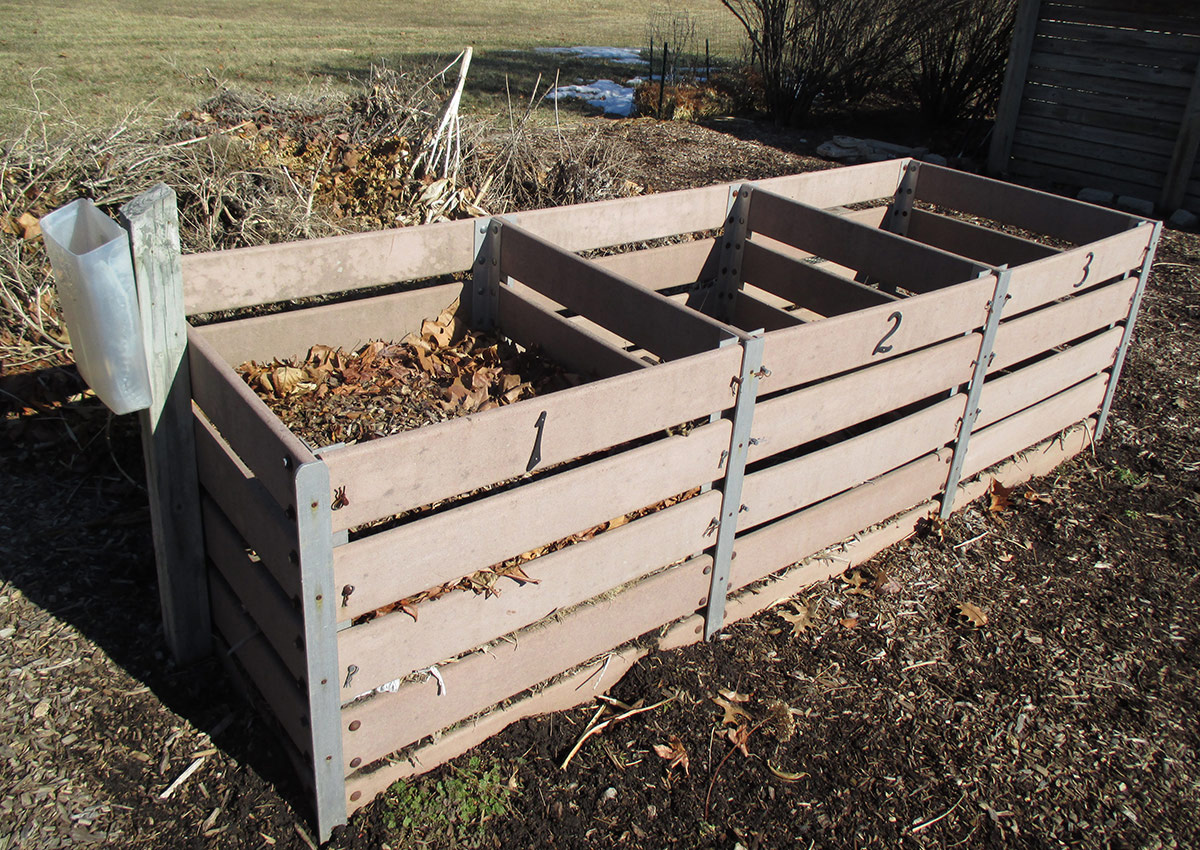
Regardless of your choice of materials, the footprint of these structures is roughly 30 square feet, with four side walls defining the three bins, backing material, front slats (or a gate), and an optional lid (or lids) to control moisture and help keep out curious rodents. Your composting system should always be positioned on properly drained, firm soil in a convenient, sheltered area that has access to supplemental water. Properly staged, secured, and managed, the science and process of composting will happen regardless of the three-bin system you buy or build.
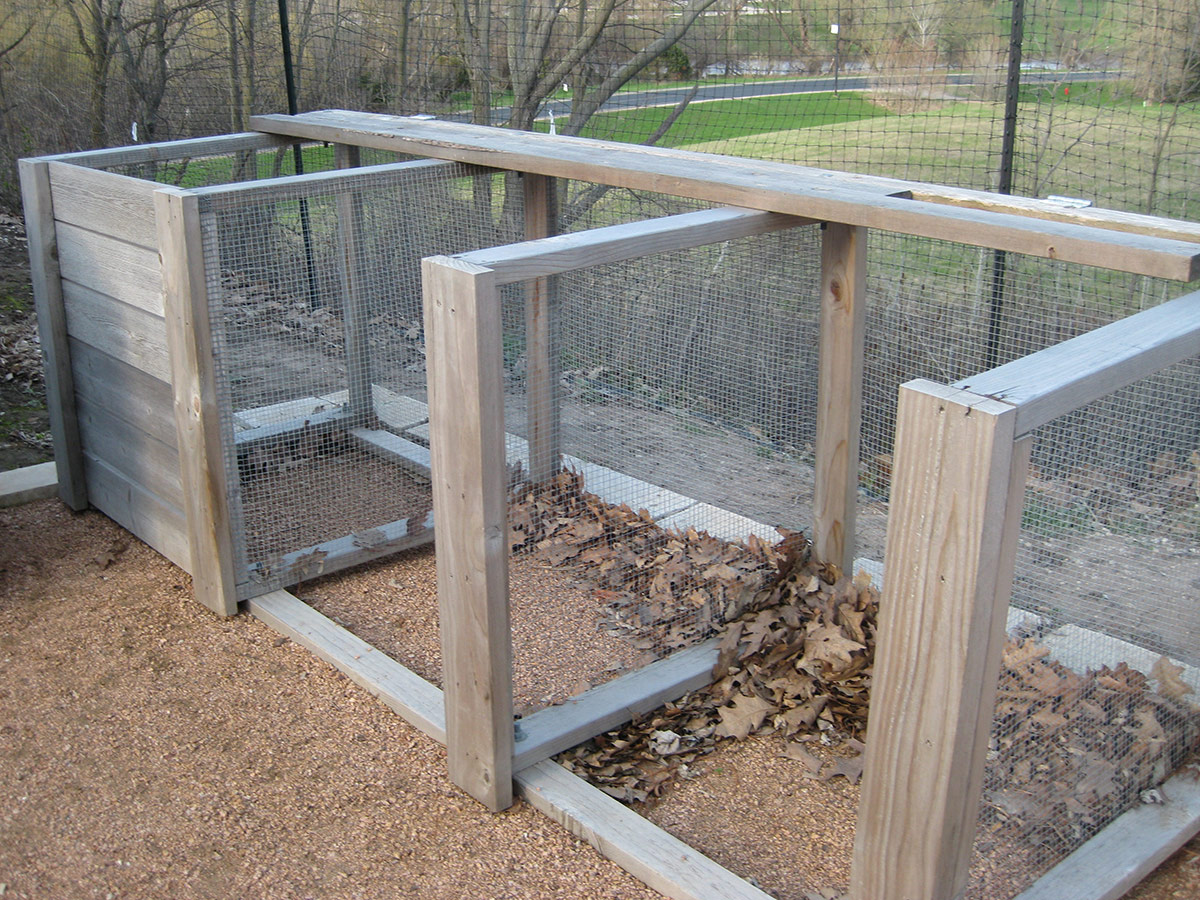
I have observed many three-bin systems, and those that struck me as the most convenient were ones with removal front slats—with finger holes!—that reveal the piles for easier access. Typically, six, 6-foot-tall boards are slotted in place between solid runners to collectively secure the front of the piles but still allow access. Hinged front doors also work well. Side and back walls can be solid, although those with mesh (½-inch grid) offer a well-ventilated sidewall that provides good aeration and moisture monitoring. The mesh I included on my dividing pallets kept the piles separate, but aeration was excellent. Again, a lid is optional but does have some value in moisture regulation and critter control.
Using your three-bin system
Starting your three-bin system, once built, could not be easier. Follow these simple steps for an endless supply of garden-boosting compost:
- Add compost material to the first bin, layering brown and green matter in the ratio of two to three parts brown to one part green, as mentioned above.
- Mix and monitor this first compost pile until it begins to decompose, then rotate your first pile into the second bin.
- Add more material to the now empty first bin.
- Move the finished compost in the second bin to the final bin when it’s ready to be used in the garden. You’ll know your compost is ready when it’s a rich, dark brown color; has an earthy odor; and the texture is crumbly and moist.
- Keep rotating through this cycle and adding new material to the first bin.
- Enjoy a healthier and happier garden.
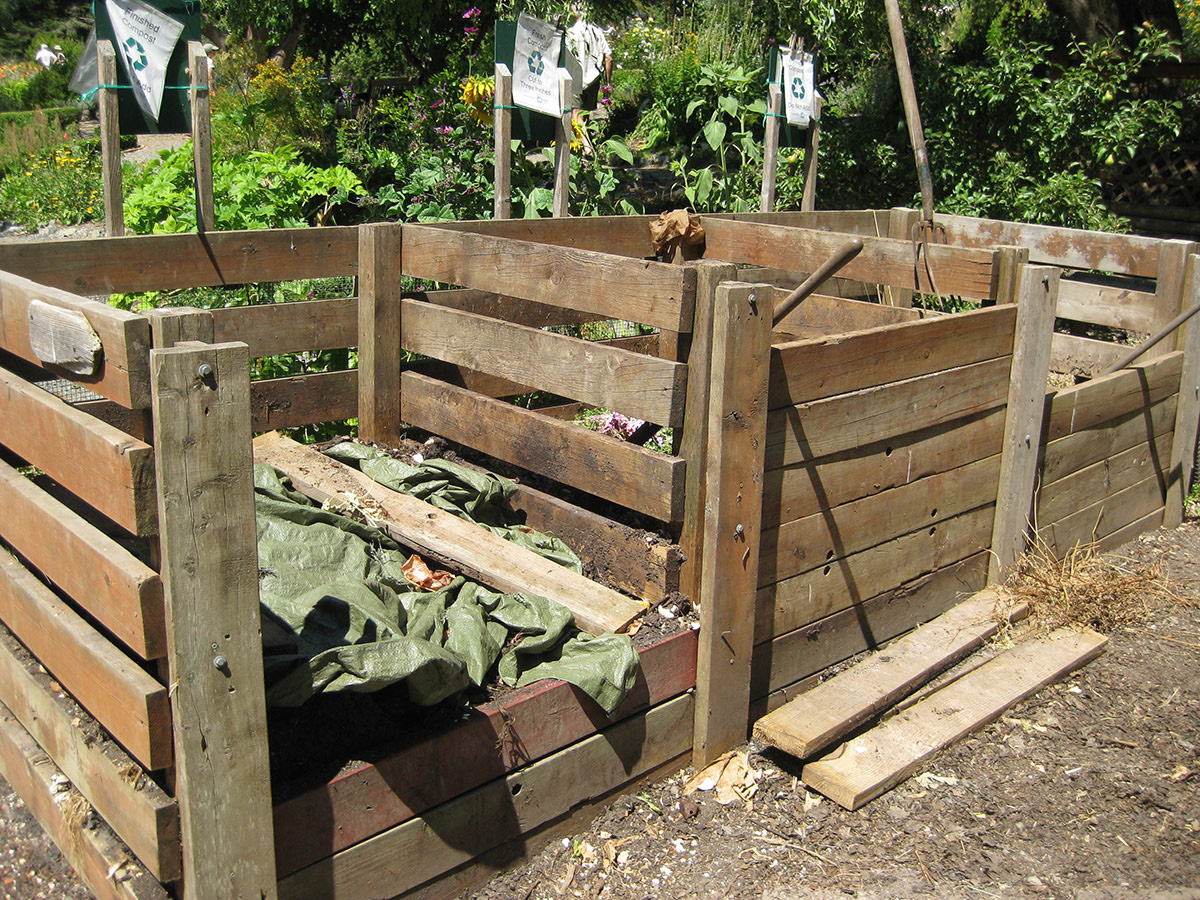
More on composting:
- Get Serious About Compost: How to Make More, Better, Faster
- Composting Made Easy
- Critters in Your Compost?
And for more Midwest regional reports, click here.
Photos: Mark Dwyer
Mark Dwyer is the garden manager for the Edgerton Hospital Healing Garden in Edgerton, Wisconsin, and operator of Landscape Prescriptions by MD.
Fine Gardening Recommended Products
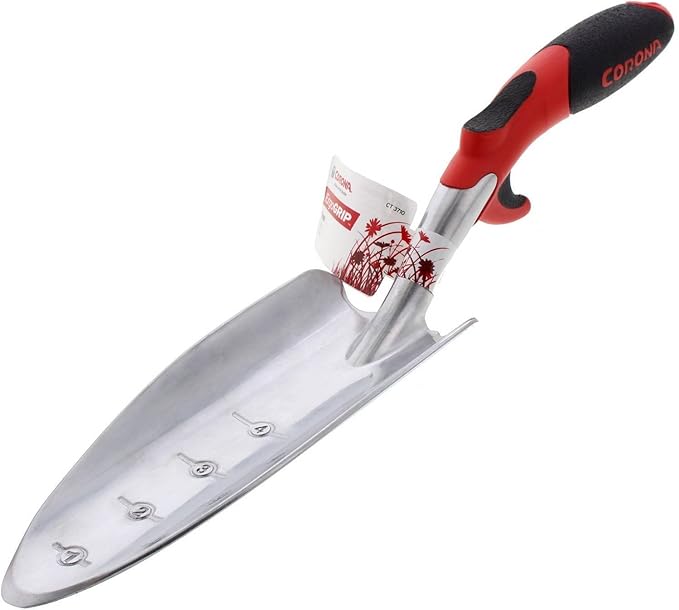
Corona E-Grip Trowel
Fine Gardening receives a commission for items purchased through links on this site, including Amazon Associates and other affiliate advertising programs.



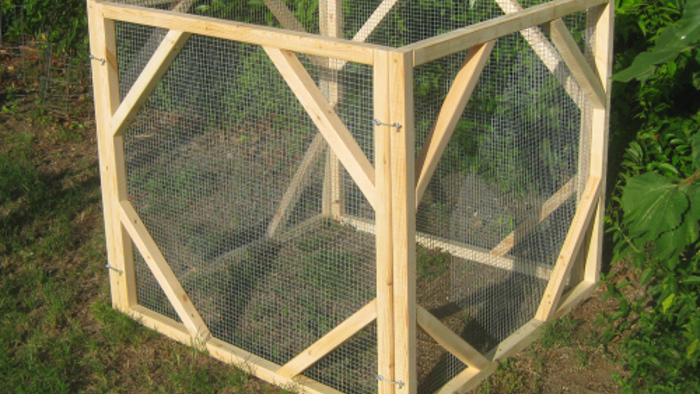

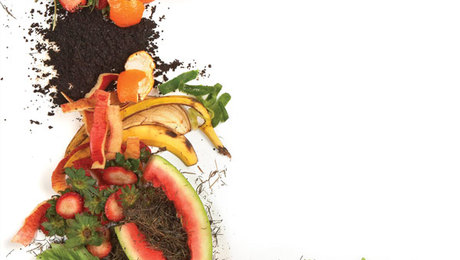
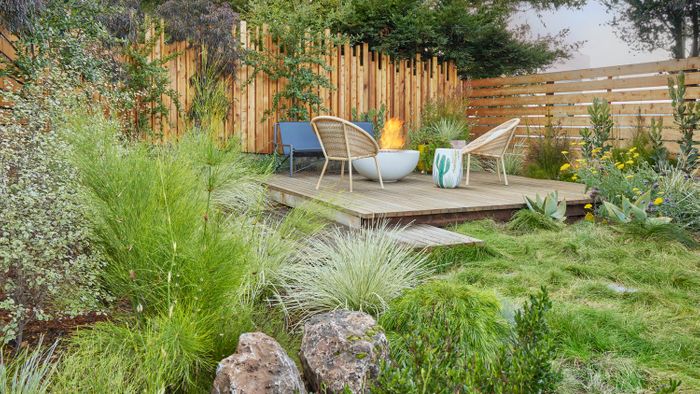

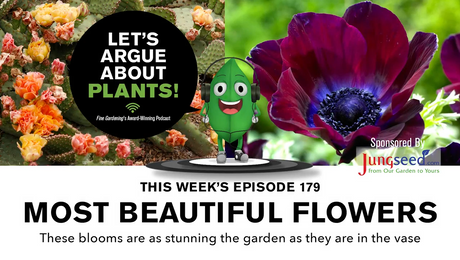










Comments
Log in or create an account to post a comment.
Sign up Log in